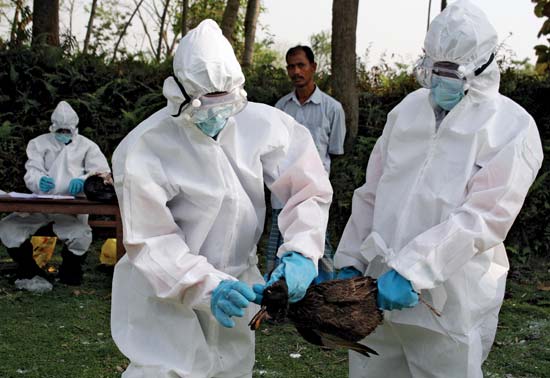Avian influenza normally infects birds but it has been transmitted from birds to humans quite often. What is even more alarming is that a new paper has been published on this disease which concludes that the virus behind this influenza may mutate in the coming days so that it may become airborne and will then be transmissible from one human to another.
Specifically called H5N1 Avian influenza, this disease can prove quite dangerous in the coming days if proper measures are not taken in advance. The paper suggests that the virus is merely four mutations away from becoming airborne. And these mutations need not happen within human population, these can very well happen out in the wild.
Earlier, a paper published on the same subject had concluded that the virus was transmissible in mammals. The papers were based on the research from Cambridge which, in turn, was gathered from 15 years of surveillance data.
According to Colin Russell of the University of Cambridge, “Viruses that have two of these mutations are already common in birds, meaning that there are viruses that might have to acquire only three additional mutations in a human to become airborne transmissible. The next key question is ‘is three a lot, or a little?”
A number of factors, scientists say, can bolster the possibility of these mutations of the virus. Moreover, there is a possibility that the virus infects a human via a bird and one of the particles of infection may have a key mutation which in turn will greatly increase the chances of the general mutation of the virus.
The Professor of Infectious Disease Informatics at the University of Cambridge, Derek Smith says, “With the information we have, it is impossible to say what the exact risk is of the virus becoming airborne transmissible among humans. However, the results suggest that the remaining three mutations could evolve in a single human host, making a virus evolving in nature a potentially serious threat. We now know that it is in the realm of possibility that these viruses can evolve in nature, and what needs to be done to assess the risk more accurately of these mutations evolving in nature.”
Source: TG Daily
[ttjad]





Earlier, a paper published on the same subject had concluded that the
virus was transmissible in mammals. The papers were based on the
research from Cambridge which, in turn, was gathered from 15 years of
surveillance data.
http://www.erectz.com